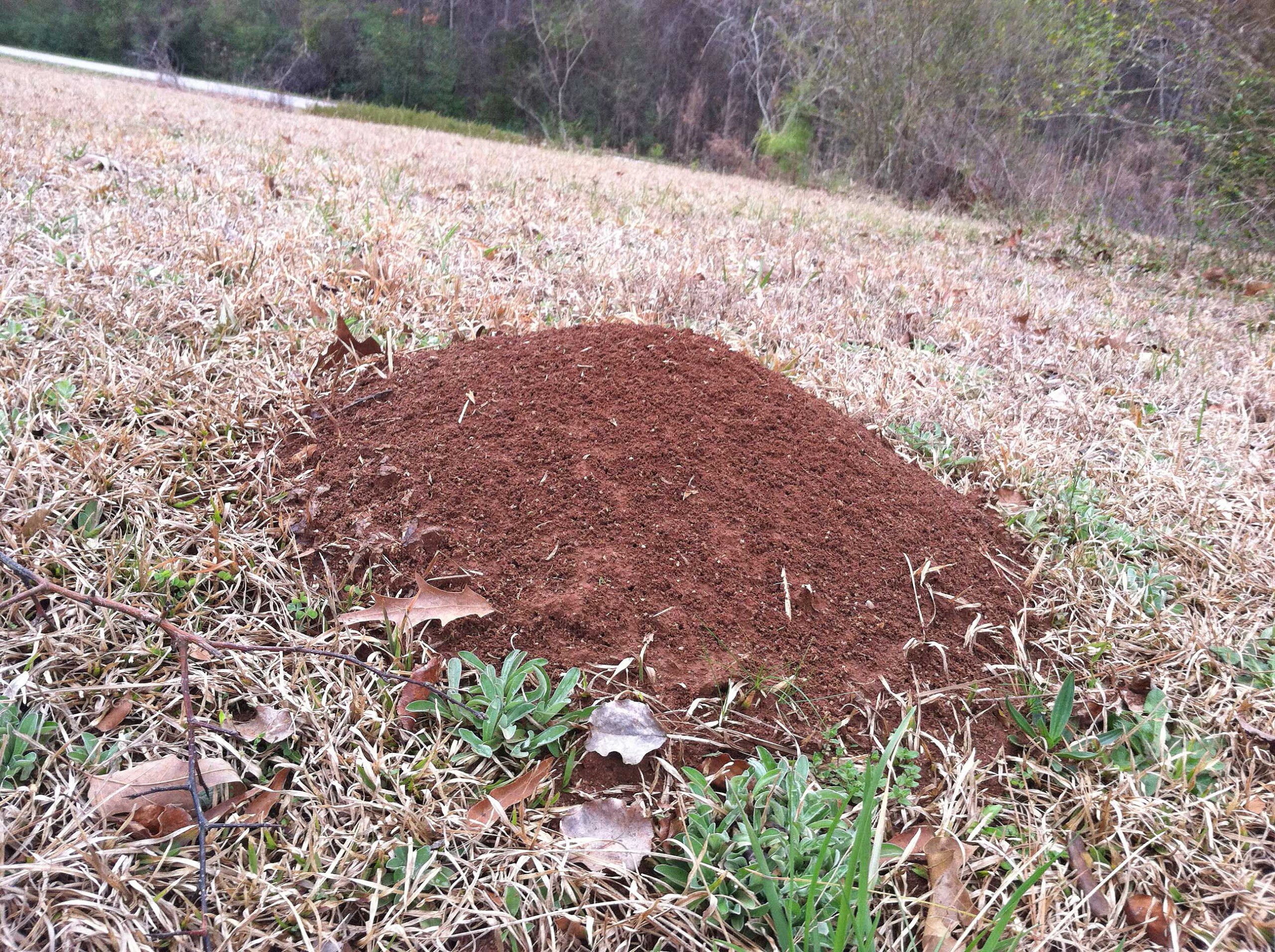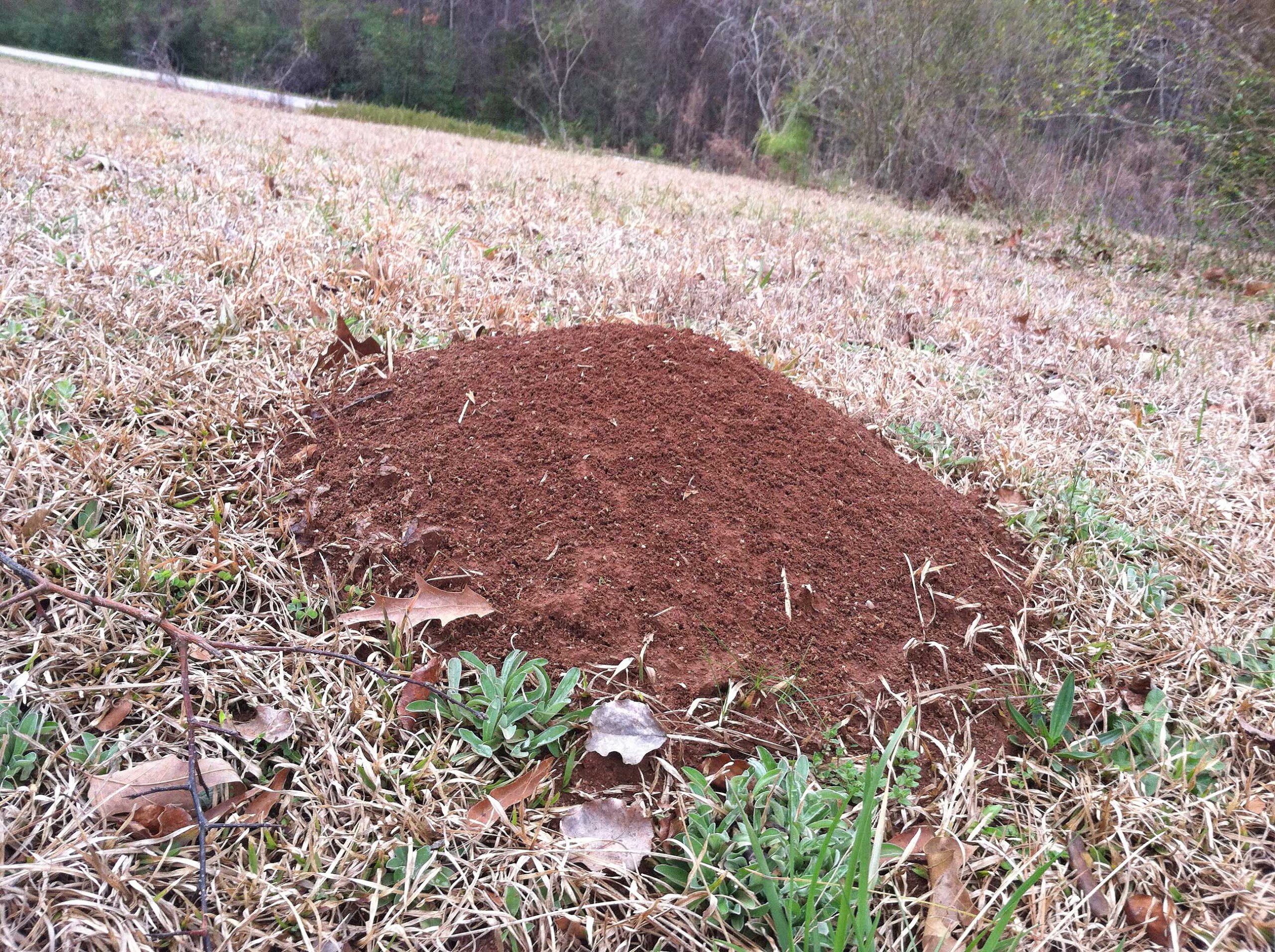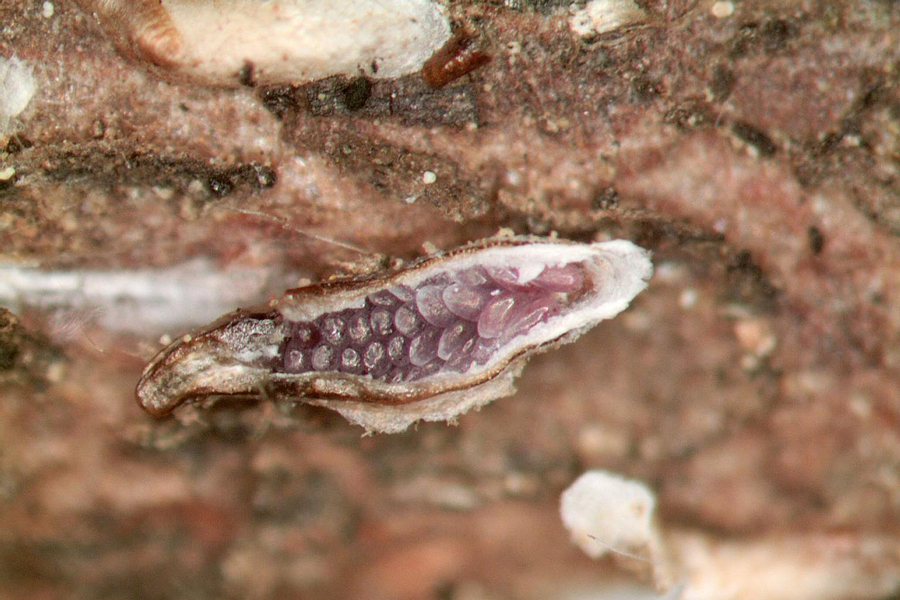Nothing ruins a good cookout or run through the sprinklers like a mound of fire ants. With warmer weather around the corner, early spring is the time to tackle fire ants problems before they spoil summer fun.
A quick Internet search will yield a slew of home remedies — from applications of grits to vinegar solutions — that are purported to get rid of fire ants. Dan Suiter, a University of Georgia College of Agricultural and Environmental Sciences entomologist, researches fire ants and works with homeowners through UGA Extension. He hates to be the bearer of bad news, but says there’s no proof that any of these remedies work.
The most effective and most ecologically sound way to get rid of fire ants is to use a bait product containing the active ingredients hydramethylnon (for example, Amdro), methoprene or spinosad.
“It’s like a smart bomb,” Suiter said. “You’re putting out a very small concentration of material, and the only thing that it will affect is the fire ants.”
The trick is using it correctly, he said.
Buying bait
Homeowners typically have two options available to them in the home improvement store — fire ant baits and broadcast ant poisons.
Amdro, for instance, consists of a small granule of ground corncob saturated in soybean oil that contains the active ingredients hydramethylnon and/or methoprene. Hydramethylnon is an acute toxin designed to kill fire ants when they eat the bait.
The broadcast poison is made of clay particles coated with a chemical like bifenthrin, which kills fire ants when they come in contact with the residue left behind. Bifenthrin is not selective. It kills any insect, both beneficial and harmful.
Fire ant baits often come in smaller bags and are labeled as bait. Suiter suggests buying the smallest bag or no more than you will need this summer. Due to the soybean oil coating, the bait can go rancid after one season — making the bait unpalatable to the ants.
Application is key
Follow the directions on the fire ant bait package exactly. Suiter recommends applying bait in a 2 or 3 foot-diameter circle around the mound — not on top of the mound.
The ants will forage out, retrieve the bait and take it back to their nest. Suiter warns not to apply bait to the top of the fire ant mound. Since fire ants do not typically forage on top of their mound, they may not find it to eat it.
It’s best to apply the bait on a warm, sunny afternoon, after all the morning dew has dried, he said. Baits should never be applied to wet soil or watered into grass. This will ruin the smell and taste of the bait. Never water in bait after it’s been spread.
“Ants are very finicky about what they can smell,” Suiter said. “Cigarette smoke or gas smells can contaminate bait and keep ants from taking the bait. They can also tell if it’s gone rancid, so use it very quickly and seal the bag really well if you don’t use it all. If you have a bag from last year, there’s a good chance it has gone rancid, and the ants won’t touch it.”
Bait stored for more than a year or kept near gasoline or fertilizer may not be as effective. Cigarette smokers or anyone who has handled gasoline or fertilizers should wear gloves when applying bait because even subtle changes in the bait’s odor can deter ants.
When using a handheld broadcast spreader to apply the bait, make sure it has not been used for any other lawn chemicals. If its new, rinse it with water before spreading the bait to cut down on the smell of new plastic.
Keep those ants hungry
Avoid disturbing the ant beds before treating them with bait. This distracts them from their primary goal of foraging for food.
“Don’t kick the mound, because if you do, the colony will release an alarm hormone,” Suiter said. “They’ll all be looking to defend the mound against the threat; they will not be out looking for food.”
What happens next?
After bait has been applied, nearby ants will forage out to collect it, and it should be gone within hours, Suiter said.
Over the next week to 10 days, the ants will suck the poison-laden soybean oil off the corn granules and begin to die. If a mound is still active 10 days after application, a second application of bait may be necessary.
For more information about problem ants, call your local UGA Extension agent at 1-800-AskUGA1 or visit caes.uga.edu/publications.





